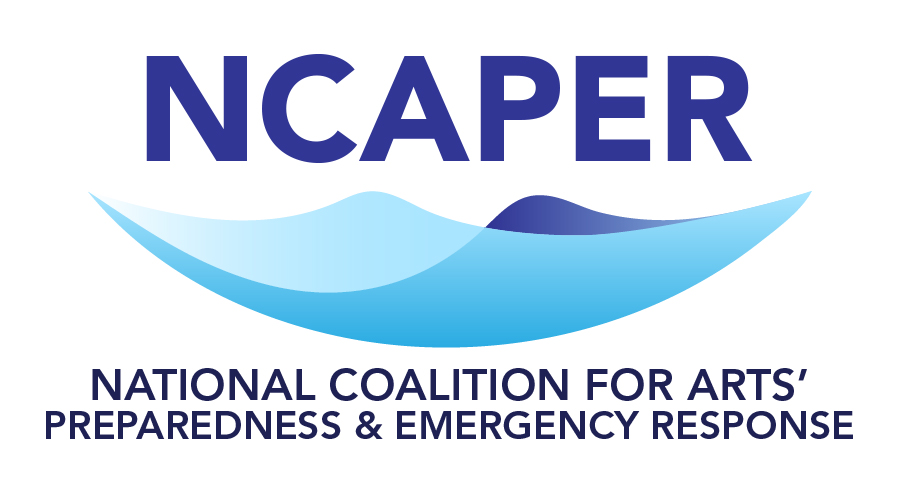Disaster Recovery Resources for Artists and Arts Organizations
By Elizabeth Snell

(Updated July 10, 2024 – As damages continue to be assessed, disaster assistance will continue to be updated. Originally published May 3, 2024.)
In late April, devastating tornadoes swept through our region and intense storms continue to be in the forecast. In July, we have experienced the destructive path of Hurricane Beryl. The aftermath of such natural disasters leaves communities grappling with loss, displacement, and uncertainty.
In this season of hurricanes, tornadoes, and other severe weather in our region, it’s always best to be prepared. But when you can’t, there are resources ready to help rebuild.
The Red Cross, the United Way, the Salvation Army and other local emergency relief funds, emergency shelters, donation centers, and community foundations are ready to help people and communities recover and rebuild.
The Heritage Emergency National Task Force (HENTF), a public-private partnership between Federal Emergency Management Agency (FEMA) and the Smithsonian Institution, is supporting response and recovery efforts the arts and culture sector as well as the public. Here are some resources from FEMA, HENTF, and National Coalition for Arts Preparedness and Emergency Response (NCAPER) specific to artists and arts and cultural organizations.
Disaster Resources for Individuals and Arts and Cultural Organizations
Recent changes to FEMA and HENTF have made it easier to deliver aid to communities and individuals and may make aid more accessible to artists, entrepreneurs, self-employed individuals, as well as cultural institutions and arts organizations.
NCAPER Rapid Damage Assessment Forms: If you were impacted, or know artists and cultural institutions impacted for a disaster, please fill out one of the following rapid damage assessment forms.
- Cultural Institutions: Rapid Damage Assessment Form
- Arts Organizations: Rapid Damage Assessment Form
- Individual Artists and Performing Groups: Rapid Damage Assessment Form
With support from the Heritage Emergency National Task Force (HENTF) and in collaboration with the Foundation for Advancement in Conservation (FAIC), these new online assessment forms will help identify where assistance is sought, provide assistance where needed, understand critical needs, and inform recovery efforts moving forward. Learn more about these changes.
National Heritage Responders
The National Heritage Responders, a team of trained conservators and collections care professionals administered by the Foundation for Advancement in Conservation, are available 24/7 to provide advice and guidance.
Cultural institutions, arts organizations, and artists and performing groups can call the National Heritage Responders hotline: 202.661.8068.
Members of the public and individual artists who have questions about saving family heirlooms and personal collections can email the National Heritage Responders at NHRpublichelpline@culturalheritage.org.
HENTF’s Save Your Family Treasures guidance is available at www.fema.gov/assistance/save-family-treasures. Here you can find the downloadable FEMA fact sheets “After the Flood: Advice for Salvaging Damaged Family Treasures” and “Salvaging Water-Damaged Family Valuables and Heirlooms,” available in multiple languages.
FEMA Public Assistance is Available to Oklahoma, Nebraska, and Texas Counties with Major Disaster Declaration
Through The Federal Emergency Management Agency (FEMA), Public Assistance and Individual Assistance are now available to counties with major disaster declarations.
Search the most recent disaster declarations at fema.org/disaster to see if your county is listed.
Please see maps for further location and assistance details. Public Assistance is currently only available Category A (debris removal) and Category B (emergency protective measures, including direct technical assistance). Learn more about Public Assistance: Categories A and B). Updates may be made if additional categories are added.
Emergency protective measures may include, but are not limited to:
- Temporary emergency repair (blue roofs and other work) or stabilization of an eligible facility if it eliminates or lessens an immediate threat
- Wet vacuuming, damp wiping, or vacuuming with High-Efficiency Particulate Air (HEPA) equipment of the interior space
- Removal of contaminated gypsum board, plaster (or similar wall finishes), carpet or floor finishes, and ceilings or permanent light fixtures
- Cleaning of contaminated heating and ventilation (including ductwork), plumbing, and air conditioning systems or other mechanical equipment
- Removal or relocation of collections to prevent damage or loss
For more information, go to Public Assistance Program and Policy Guide Version 4 (fema.gov).
Additionally, Texas Collections Emergency Resource Alliance (TX-CERA), a private non-profit organization in Texas, whose mission is to serve as an educational resource for disaster preparedness, response, and recovery for Texas cultural institutions can be contacted for support via their hotline number: 669-237-2243.
FEMA’s Individual Assistance Program
This program includes disaster relief to artists and self-employed individuals.
Individual Assistance is available to individuals and households in a location with a major disaster declaration. For disasters declared on or after March 22, 2024, FEMA’s Individual Assistance program was expanded to include quicker access to needed funds including simplifying assistance for self-employed individuals such as self-employed artists and entrepreneurs.
- Search the most recent disaster declarations at fema.org/disaster to see if your county is listed.
Questions
These resources and updates were compiled from an update from Sarah Caruso, Disaster Operations Specialist at Heritage Emergency National Task Force, Office of Environmental Planning & Historic Preservation Resilience. Please convey any questions to Sarah Caruso at fema-hentf@fema.dhs.gov.
For more information, visit https://culturalrescue.si.edu/who-we-are/hentf and the Federal Emergency Management Agency fema.gov
Prepare for Disasters Before They Happen
To help prepare yourself or your organization for an emergency, visit the National Coalition for Arts Preparedness and Emergency Response (NCAPER) at www.ncaper.org.
NCAPER’s programs are designed to help artists and arts organizations prepare for, respond to, and recover from disasters. They also aim to build resilience and capacity in the arts and culture sector.
Resources include emergency preparedness checklists, webinars, instructions for creating disaster plans, and more.
Quick Preparedness Links
- Sign up for National Emergency Alerts
- Download the FEMA App
- FEMA Easy Guide for Alerts and Warnings
- Make a Plan
- Call 800-621-FEMA (3362)



